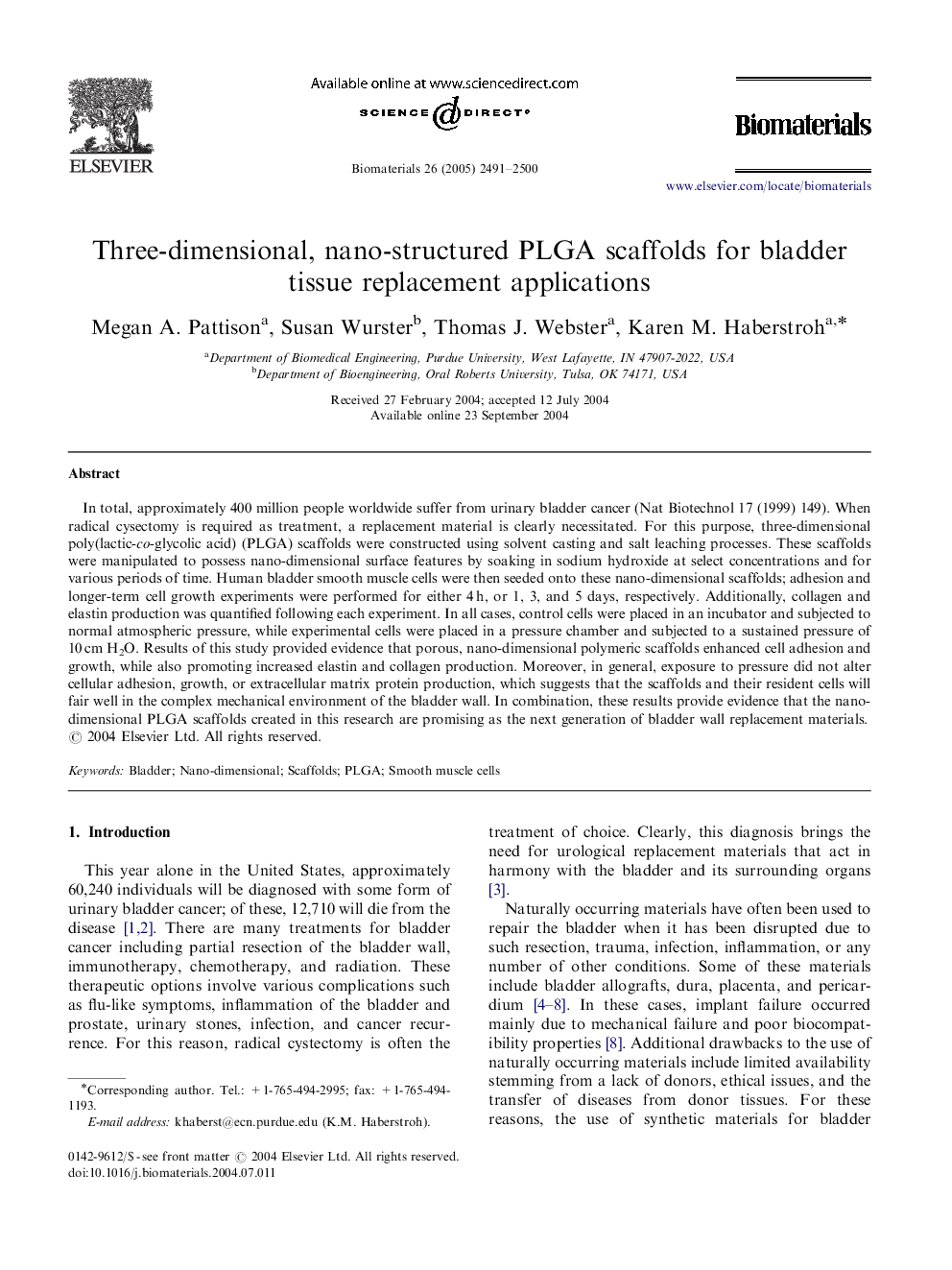| Article ID | Journal | Published Year | Pages | File Type |
|---|---|---|---|---|
| 12815 | Biomaterials | 2005 | 10 Pages |
In total, approximately 400 million people worldwide suffer from urinary bladder cancer (Nat Biotechnol 17 (1999) 149). When radical cysectomy is required as treatment, a replacement material is clearly necessitated. For this purpose, three-dimensional poly(lactic-co-glycolic acid) (PLGA) scaffolds were constructed using solvent casting and salt leaching processes. These scaffolds were manipulated to possess nano-dimensional surface features by soaking in sodium hydroxide at select concentrations and for various periods of time. Human bladder smooth muscle cells were then seeded onto these nano-dimensional scaffolds; adhesion and longer-term cell growth experiments were performed for either 4 h, or 1, 3, and 5 days, respectively. Additionally, collagen and elastin production was quantified following each experiment. In all cases, control cells were placed in an incubator and subjected to normal atmospheric pressure, while experimental cells were placed in a pressure chamber and subjected to a sustained pressure of 10 cm H2O. Results of this study provided evidence that porous, nano-dimensional polymeric scaffolds enhanced cell adhesion and growth, while also promoting increased elastin and collagen production. Moreover, in general, exposure to pressure did not alter cellular adhesion, growth, or extracellular matrix protein production, which suggests that the scaffolds and their resident cells will fair well in the complex mechanical environment of the bladder wall. In combination, these results provide evidence that the nano-dimensional PLGA scaffolds created in this research are promising as the next generation of bladder wall replacement materials.
